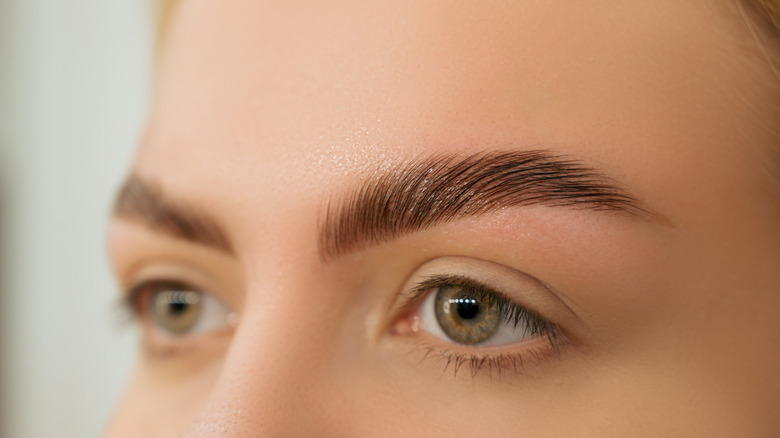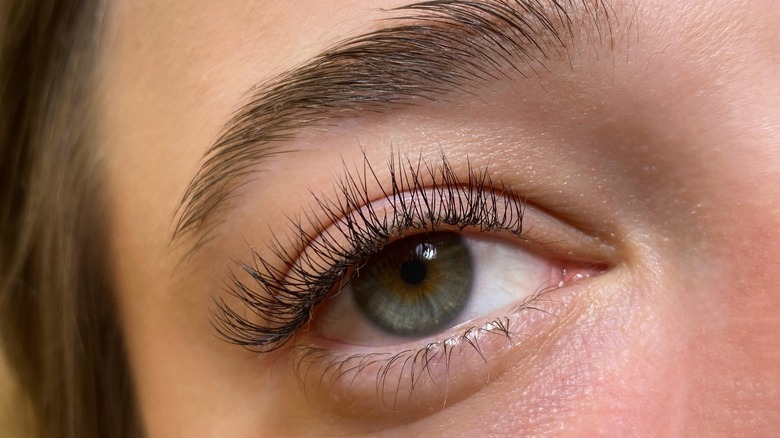How To Prevent And Treat Eyelash Lice
Lice are small, wingless insects that infest the hair and scalp. They can cause intense itching and can spread from one person to another through close contact (via Healthline). Lice can come in three main types, namely head lice, pubic lice, and body lice. Given that there are different types of lice, Prevention.com highlights pubic lice as the type that is typically seen on the eyelash. The source expands that eyelash lice, also known in the scientific field as pthirus pubis, have evolved in structure such that they can attach easily to coarser textured hairs. These include the hairs in the genital area, hairs in the eyelashes, and coarse eyebrow hairs.
According to WebMD, eyelash lice are tiny, often with a cigar-shaped outline. In addition, each mite has four pairs of legs, which move in bunches, usually at the base of your eyelashes. Eyelash lice can live for up to two days without access to human blood, says Healthline. Once they're attached to your body, they can stay alive for up to 4 weeks.
Causes and symptoms of eyelash lice
According to Prevention.com, eyelash lice are mostly caused by sharing personal items with someone who has lice. Also, you can pass eyelash lice onto your eyelashes by simply touching your genitals (if your genitals are invested with pubic lice), says Healthline. Another possible cause pointed out by Medical News Today is dust. According to the source, eyelash lice can be spread by dust that contains pubic lice eggs.
The symptoms of eyelash lice can vary from person to person. According to WebMD , you can experience blurry vision, itching, eye pain, crusty edges on your eyelids, and unexplained tearing in the eyes. One symptom a doctor might look out for is swelling and redness in the eyelids. To be extremely certain, it might be best to use a microscope to identify mites or tube-like dandruff on your lashes. Another alternative is to visit your doctor for a proper diagnosis.
How to treat and prevent eyelash lice
According to Healthline, it's best to ask your doctor for advice before undergoing any treatment for eyelash lice. The source advises using a three-day treatment that involves applying a thick layer of petroleum jelly to the eyelids twice a day. Next, apply shampoo with 1% permethrin to your eyelids approximately 2 hours after spreading the petroleum jelly. Finally, wash your eyelids thoroughly about 10 minutes after applying the shampoo. Prevention.com further advises using ophthalmic-grade petrolatum ointment on the eyelids. According to the source, this ointment is acquired only through prescription and must be applied 2 to 4 times a day for up to 10 days. If this treatment doesn't work, the source states ivermectin, an oral anti-parasite medication, might be another option.
According to Medical News Today, eyelash lice don't cause major issues when present in low numbers. However, it's still important to reduce your exposure to lice eggs. To do this, Medical News Today advises using a non-soap cleanser to clean your face twice a day. Your cleansers and makeup shouldn't be oil-based or greasy in composition. Lastly, the source encourages periodic exfoliation, as this removes all dead skin cells on your face.



